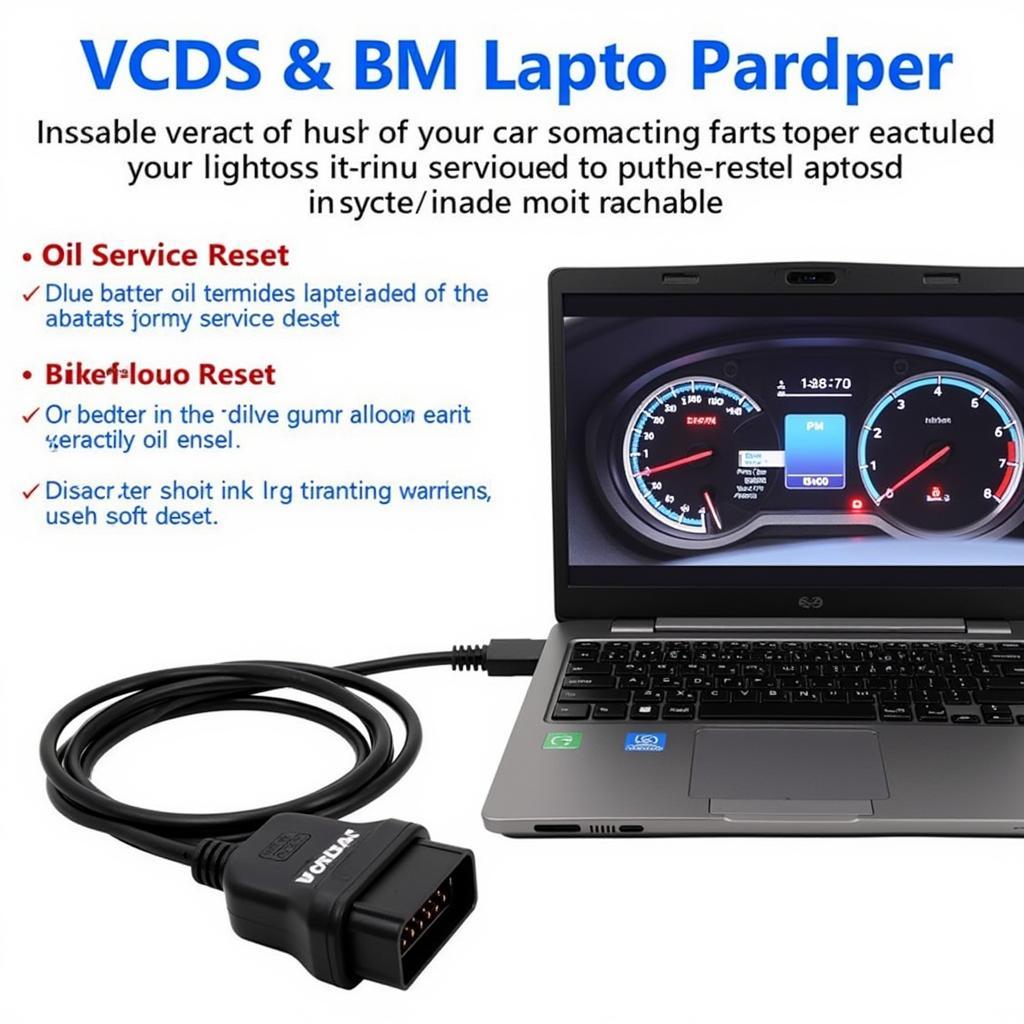The 01330 VCDS trouble code is a common issue encountered by Volkswagen, Audi, Seat, and Skoda (VAG) owners. This code indicates a malfunction with the oxygen sensor (O2 sensor), specifically Bank 1 Sensor 1, and can lead to various driveability problems and reduced fuel efficiency. This article will delve into the details of the 01330 code, its causes, symptoms, diagnostic procedures, and potential solutions.
What is the 01330 VCDS Code?
The 01330 VCDS code, often described as “Oxygen (Lambda) Sensor B1 S1: No Activity,” signifies that the engine control module (ECM) isn’t receiving any signal from the first oxygen sensor located upstream of the catalytic converter on Bank 1. This sensor plays a crucial role in monitoring the exhaust gases and providing feedback to the ECM for adjusting the air-fuel mixture. A lack of signal can disrupt this process, leading to suboptimal engine performance.
Causes of the 01330 Fault Code
Several factors can contribute to the 01330 VCDS error code:
- Faulty Oxygen Sensor: The most common culprit is a malfunctioning O2 sensor. Over time, these sensors can degrade due to exposure to high temperatures and exhaust gases.
- Wiring Issues: Damaged, corroded, or loose wiring connections between the sensor and the ECM can interrupt the signal transmission.
- Exhaust Leaks: Leaks in the exhaust system, particularly upstream of the sensor, can introduce fresh air and skew the readings, leading to the 01330 code.
- Vacuum Leaks: Unmetered air entering the engine through vacuum leaks can disrupt the air-fuel mixture and affect the O2 sensor readings.
- Faulty ECM: In rare cases, a malfunctioning ECM can be the root cause of the problem.
Symptoms of a 01330 Code
A 01330 code can manifest in several ways:
- Check Engine Light (CEL): The illumination of the CEL is the most obvious symptom.
- Reduced Fuel Economy: An incorrect air-fuel mixture can lead to increased fuel consumption.
- Rough Idle: The engine may idle erratically due to the inaccurate fuel mixture.
- Hesitation or Stalling: The engine may hesitate or stall during acceleration.
- Failed Emissions Test: A faulty O2 sensor can cause the vehicle to fail emissions tests.
Diagnosing the 01330 Code with VCDS
VCDS (Vag-Com Diagnostic System) is a powerful tool for diagnosing VAG vehicles. Here’s how to use it to diagnose the 01330 code:
- Connect the VCDS interface to the vehicle’s OBD-II port.
- Turn the ignition on.
- Launch the VCDS software.
- Select the appropriate control module (Engine).
- Go to Fault Codes – Read.
- Note down any fault codes present.
- Clear the fault codes.
- Test drive the vehicle to see if the code returns.
- Check the live data stream for the oxygen sensor readings.
Fixing the 01330 Code
Resolving the 01330 VCDS code usually involves:
- Replacing the Oxygen Sensor: This is often the most effective solution. Always use a high-quality OEM or equivalent sensor.
- Repairing Wiring Issues: Inspect the wiring harness for any damage, corrosion, or loose connections. Repair or replace as needed.
- Fixing Exhaust Leaks: Identify and repair any leaks in the exhaust system, especially upstream of the oxygen sensor.
- Addressing Vacuum Leaks: Locate and fix any vacuum leaks using a vacuum gauge and visual inspection.
- Replacing the ECM (rarely): If all other potential causes have been ruled out, a faulty ECM may need replacement.
 Replacing a Faulty Oxygen Sensor
Replacing a Faulty Oxygen Sensor
How to Prevent the 01330 Code
While not always preventable, some measures can help minimize the risk of encountering the 01330 code:
- Regular Maintenance: Adhering to the manufacturer’s recommended maintenance schedule, including regular tune-ups, can help prevent issues with the oxygen sensor and other engine components.
- Using Quality Fuel: Using high-quality fuel can help minimize deposits and contaminants that can affect the oxygen sensor’s performance.
- Addressing Exhaust and Vacuum Leaks Promptly: Repairing exhaust and vacuum leaks as soon as they are detected can prevent further complications.
“Regularly checking your vehicle with VCDS can help identify potential issues early on, preventing costly repairs down the line,” says John Miller, Senior Automotive Diagnostic Technician at CardiagTech. “The 01330 code, while common, shouldn’t be ignored as it can impact both performance and fuel efficiency.”
Conclusion
The 01330 VCDS trouble code indicates a problem with the Bank 1 Sensor 1 oxygen sensor, impacting your vehicle’s performance and fuel economy. By understanding the causes, symptoms, and diagnostic procedures, you can effectively address this issue and keep your VAG vehicle running smoothly. If you encounter this code, don’t hesitate to consult a qualified technician or use VCDS for a more in-depth diagnosis. Addressing the 01330 code promptly can save you money and ensure optimal vehicle operation.
FAQ
- What does the 01330 VCDS code mean? It indicates no activity from the Bank 1 Sensor 1 oxygen sensor.
- What are the symptoms of a 01330 code? Reduced fuel economy, rough idle, hesitation, stalling, and a check engine light.
- How do I diagnose the 01330 code? Use VCDS to read fault codes and check live data from the oxygen sensor.
- How do I fix the 01330 code? Common fixes include replacing the O2 sensor, repairing wiring, or fixing exhaust/vacuum leaks.
- Can I drive with a 01330 code? While possible, it’s not recommended as it can lead to further issues and reduced fuel efficiency.
- How can I prevent the 01330 code? Regular maintenance and using quality fuel can help minimize the risk.
- What is Bank 1 Sensor 1? It’s the first oxygen sensor located upstream of the catalytic converter on the side of the engine with cylinder #1.
For any further assistance, contact us via Whatsapp: +1 (641) 206-8880, Email: CARDIAGTECH[email protected] or visit us at 276 Reock St, City of Orange, NJ 07050, United States. We offer 24/7 customer support. Also, check out our other articles on VCDS troubleshooting and car maintenance tips on our website, CARDIAGTECH.

